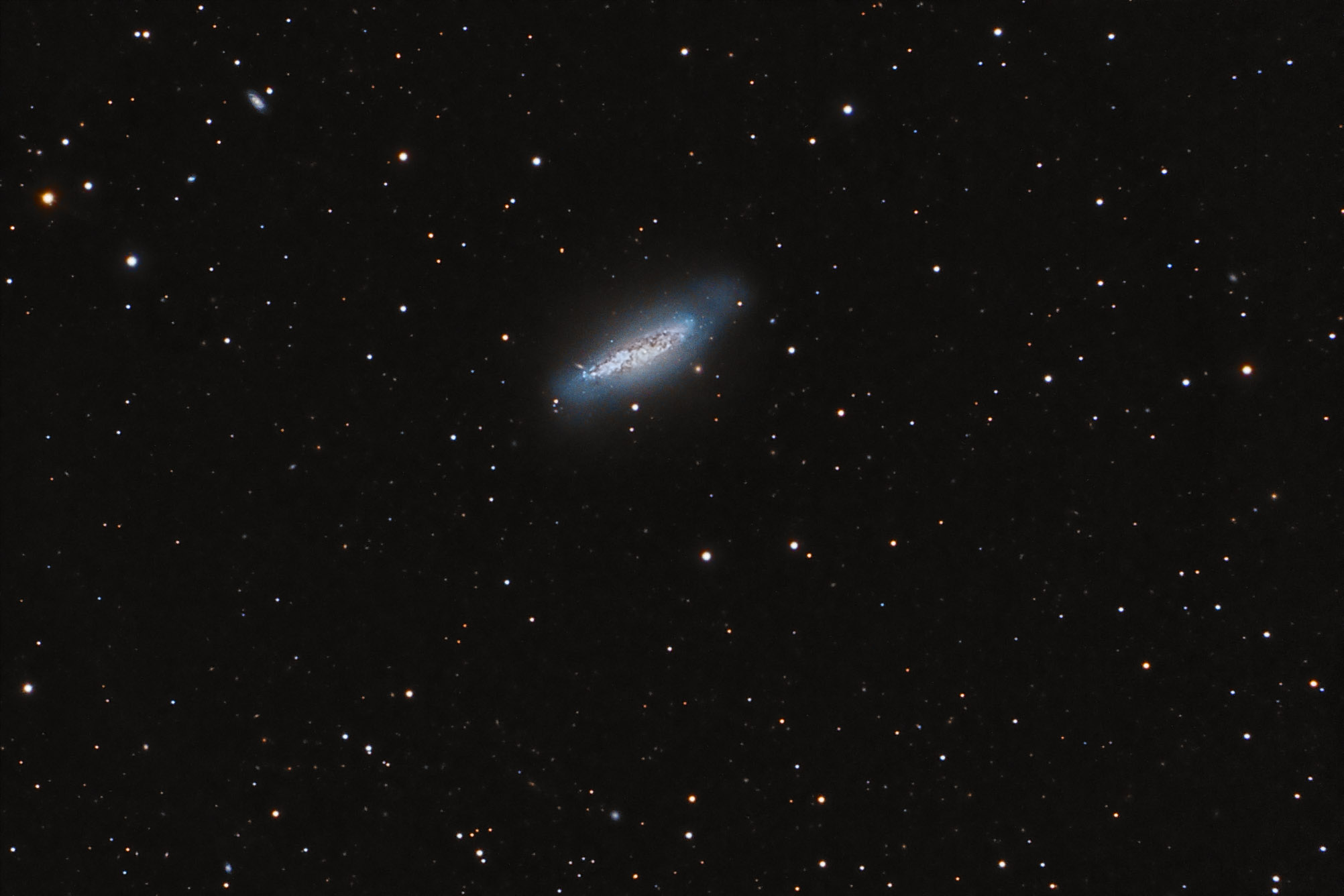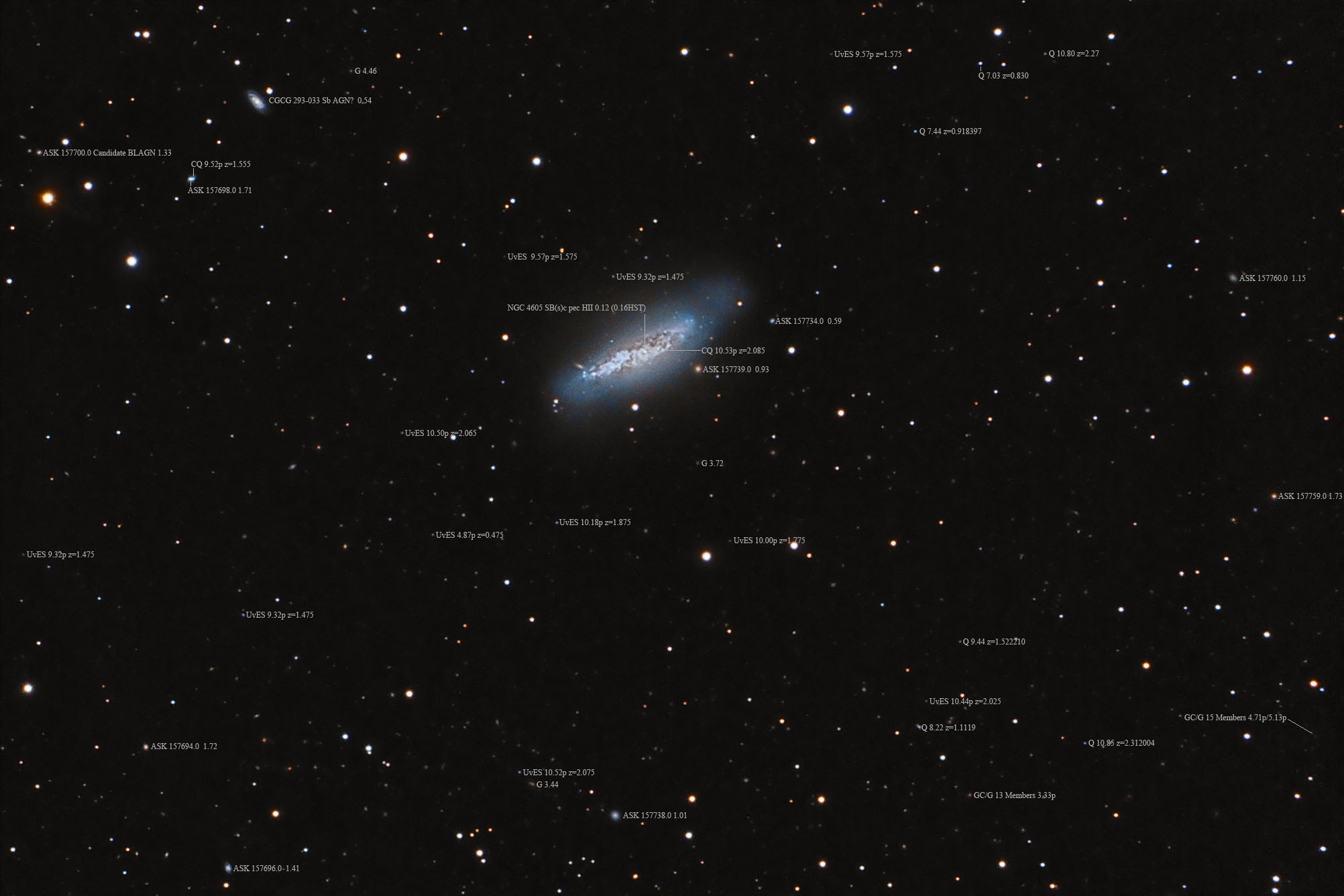| Description | Images |
Object name: NGC4605Designation(s): NGC4605, NGC 4605 is considered a member of the M81 group though it resides about 18.25 degrees east of M81 above the handle of the Big Dipper. It is a SBc dwarf spiral galaxy about 28,000 light-years across and 16 million light-years distant, somewhat further than M81. I'm afraid I can't see much hint of spiral structure other than it being a disk galaxy and no hint of a bar or even a core. I'm assuming the star like object at its center is just a field star in our galaxy. Though it's position is less than one second of arc different than that NED has for the galaxies center. I couldn't find anything to decide this issue. Visual observations speak of a star within a half degree of its center that's 13th magnitude. It was discovered by William Herschel on March 19, 1790 and is in the second Herschel 400 observing list. It's surface is strangely two tone either bright or dim with little variation, especially of the brighter star clouds. No matter how I processed it it came out this rather bi-toned galaxy. I assume this is due to the very poor conditions the night I took the data. I should have tried on a better night but this is late May and I can only get one per night so didn't want to waste the night on the chance I might get better data. Related Designation(s):11HUGS 300, 2MASS J12395928+6136329, 2MASX J12395938+6136330, 2MASXi J1240003+613629, 2MIG 1755, 87GB 123747.4+615249, 87GB[BWE91] 1237+6152, CGCG 1237.7+6153, CGCG 293-031, IRAS 12378+6152, IRAS F12378+6152, KIG 0543, KIG 0546:[VOV2007] 000, LDCE 0842 NED008, MCG +10-18-074, NGC 4605, NGC4605, NSA 141829, PGC 042408, SDSS J123959.28+613632.9, UGC 07831, UZC J124000.0+613629, [RHM2006] SFGs 076, [SPB93] 192, [WB92] 1237+6152, |

